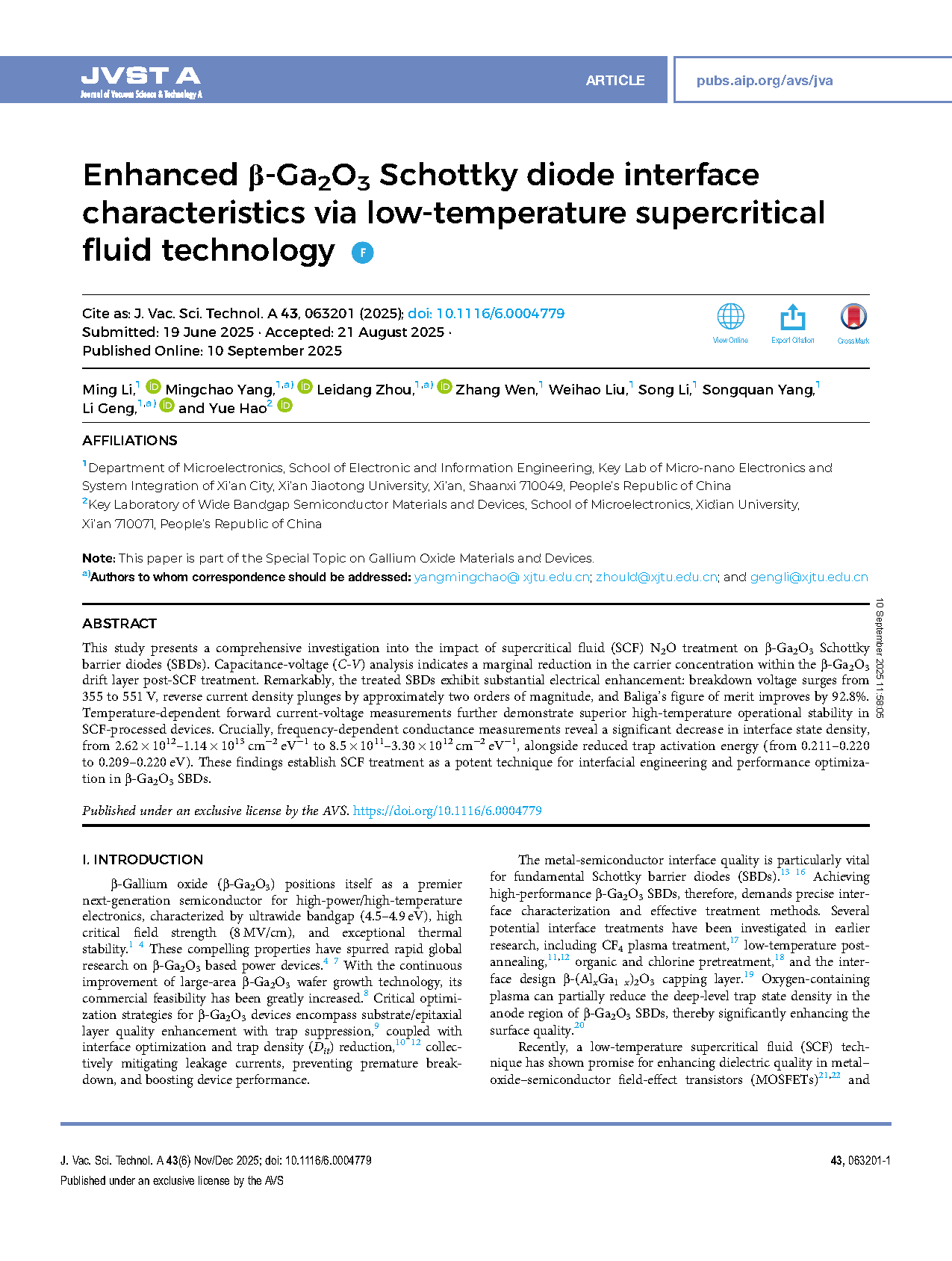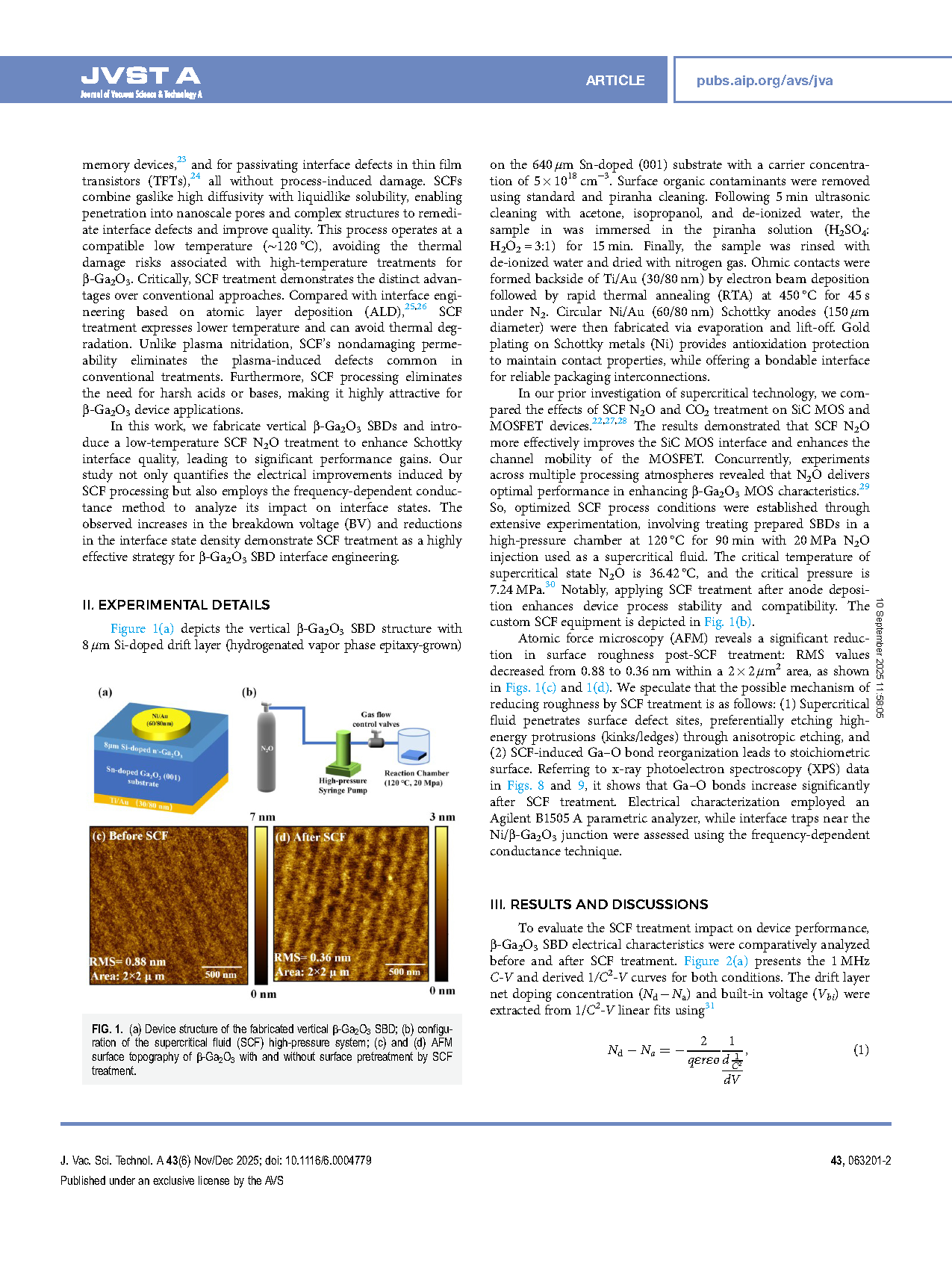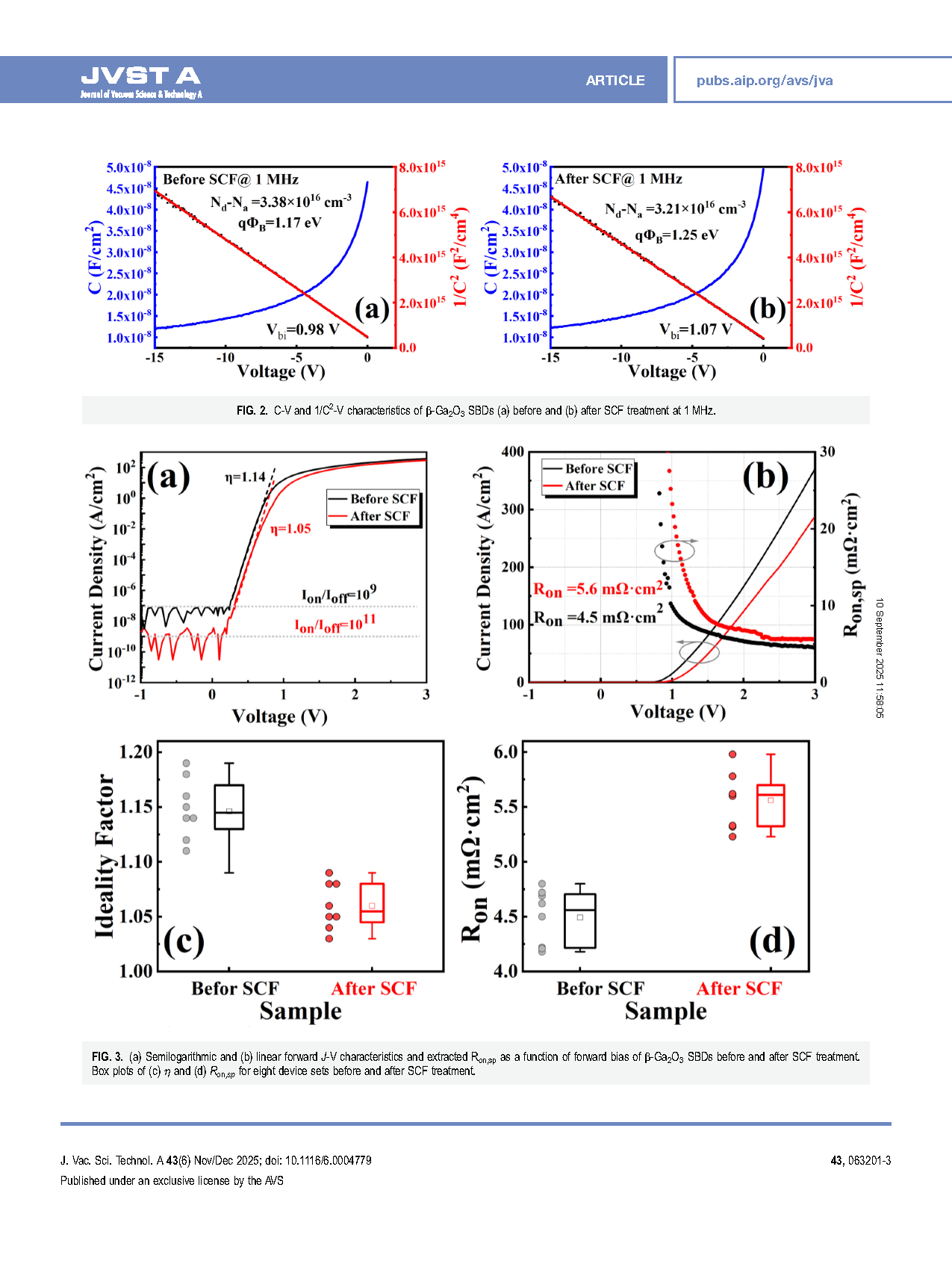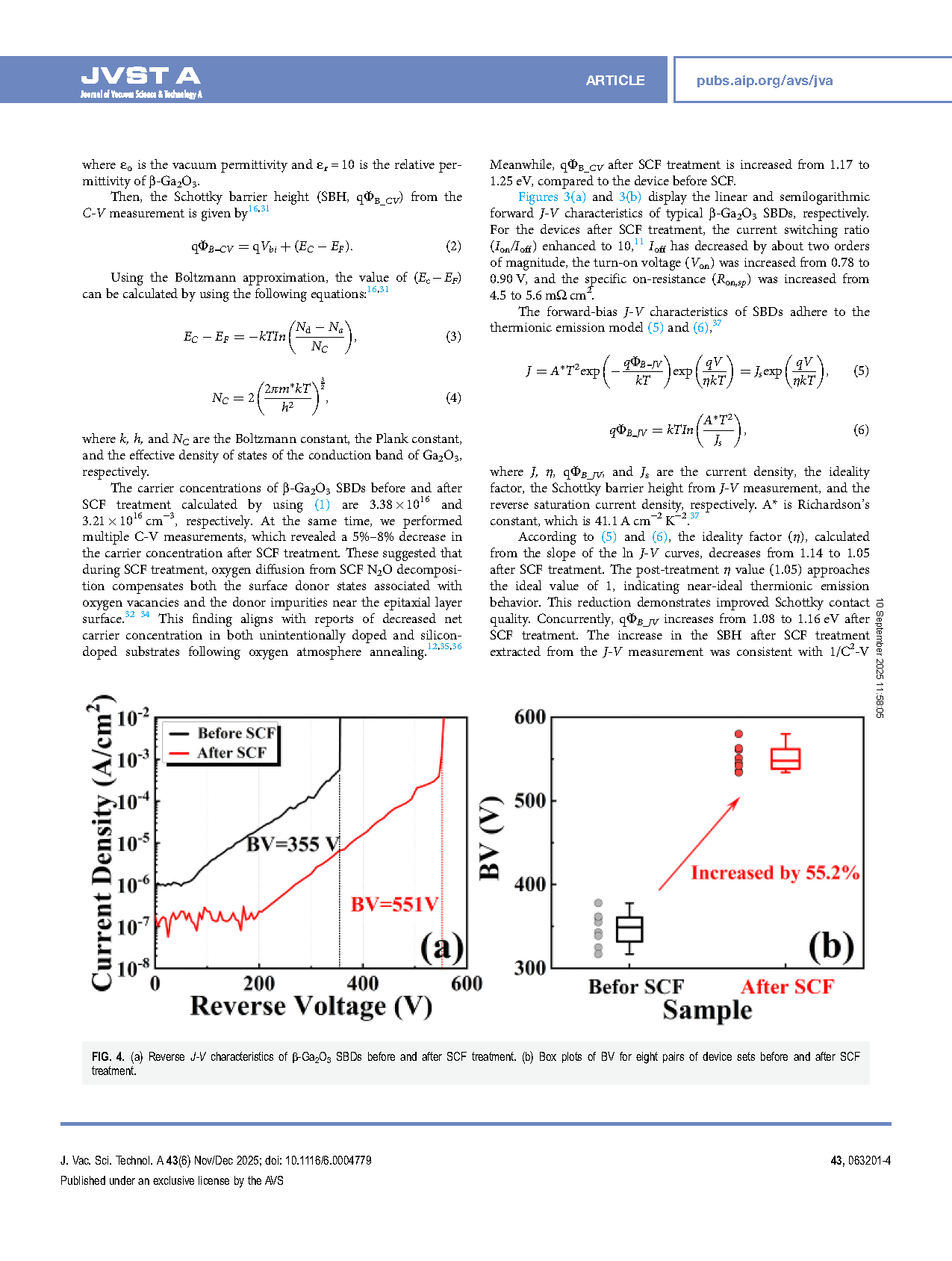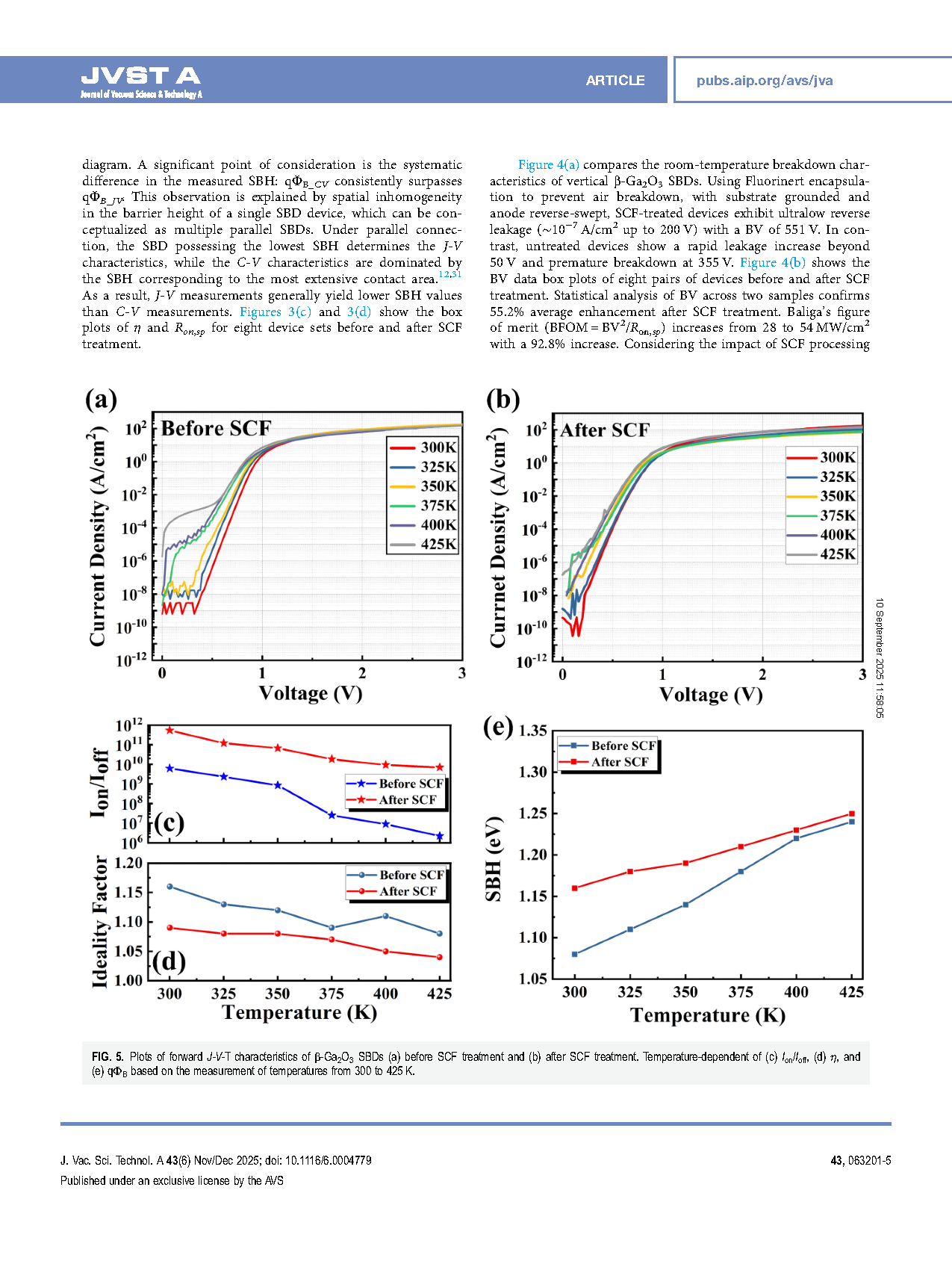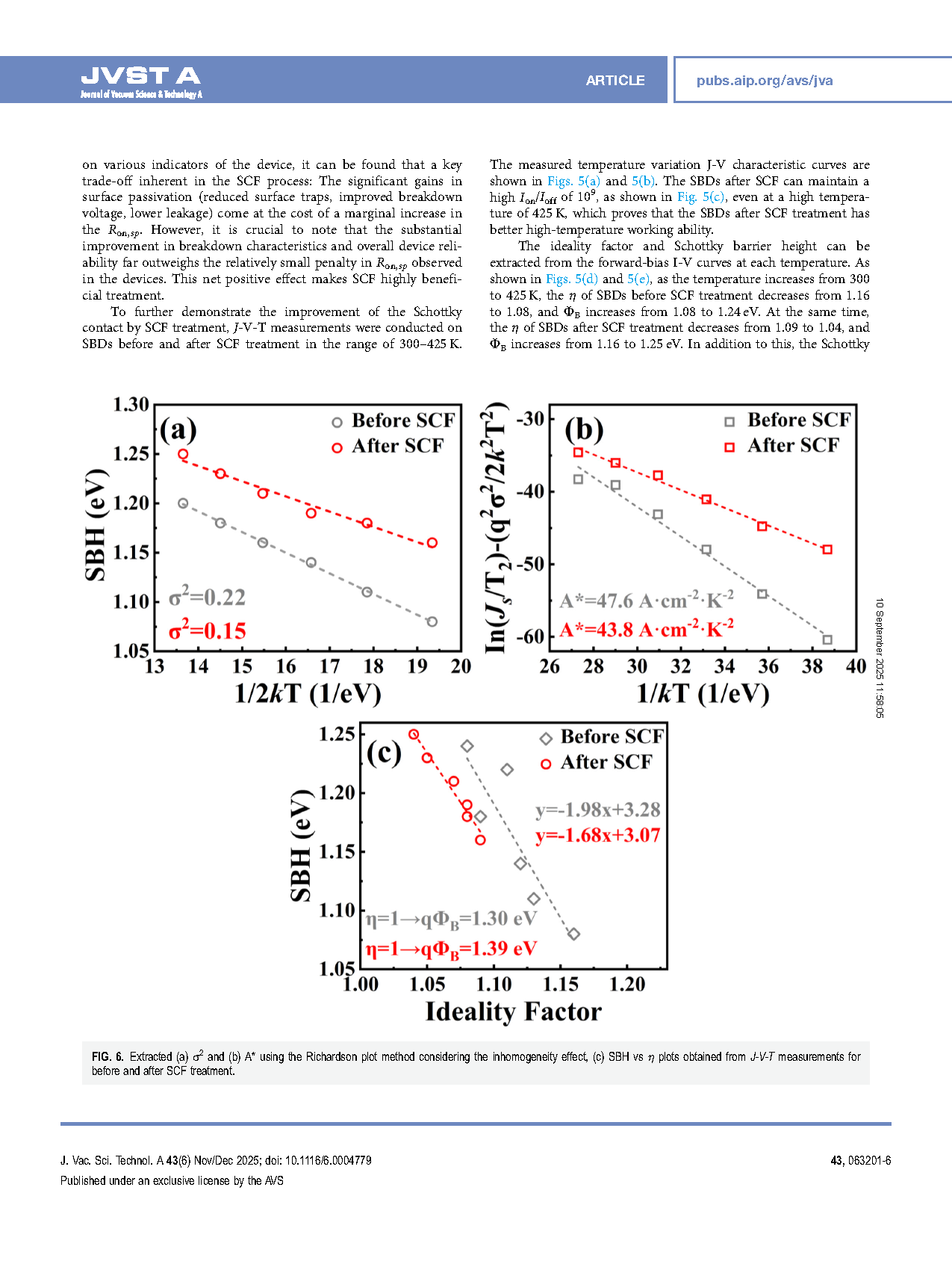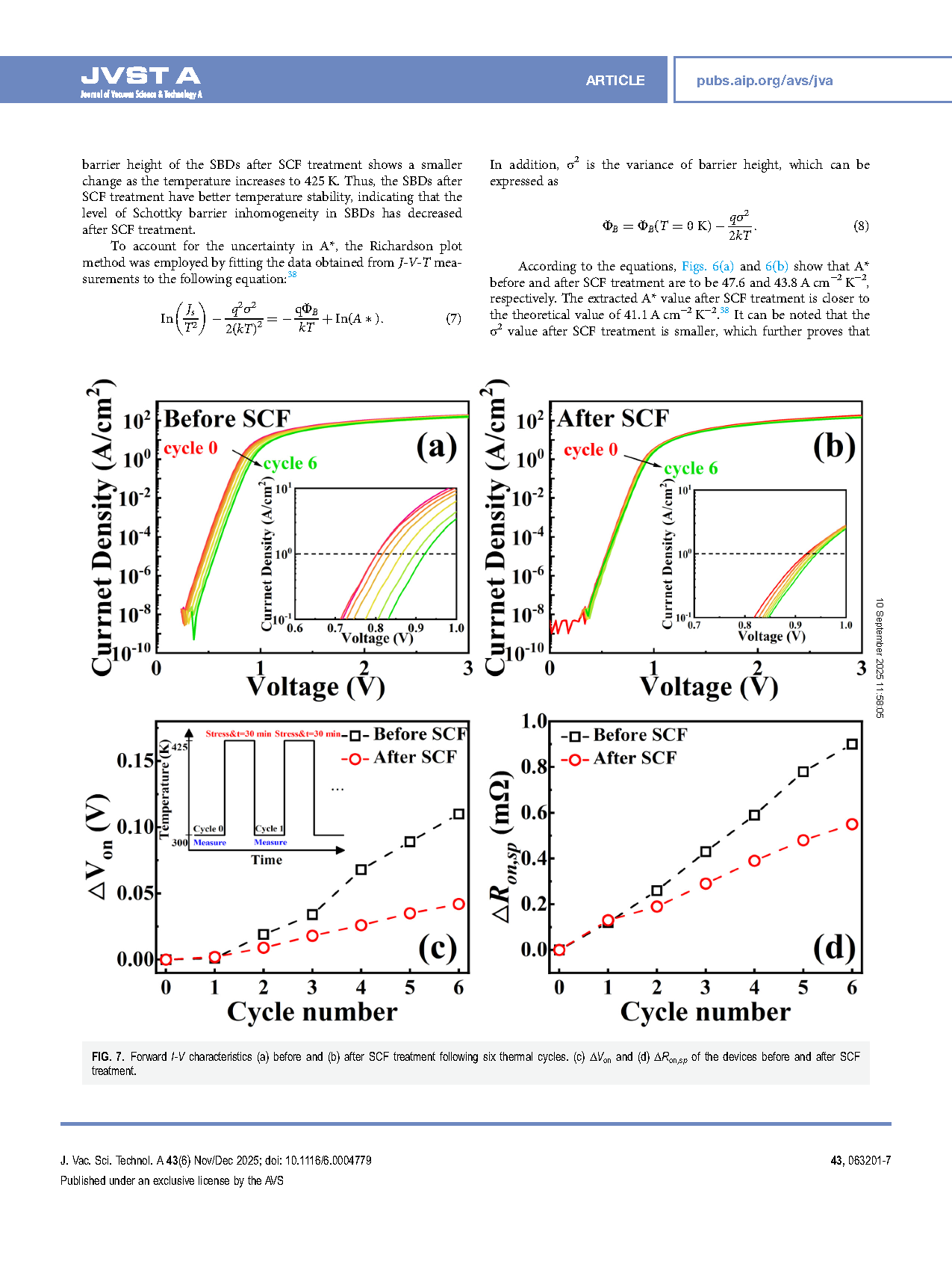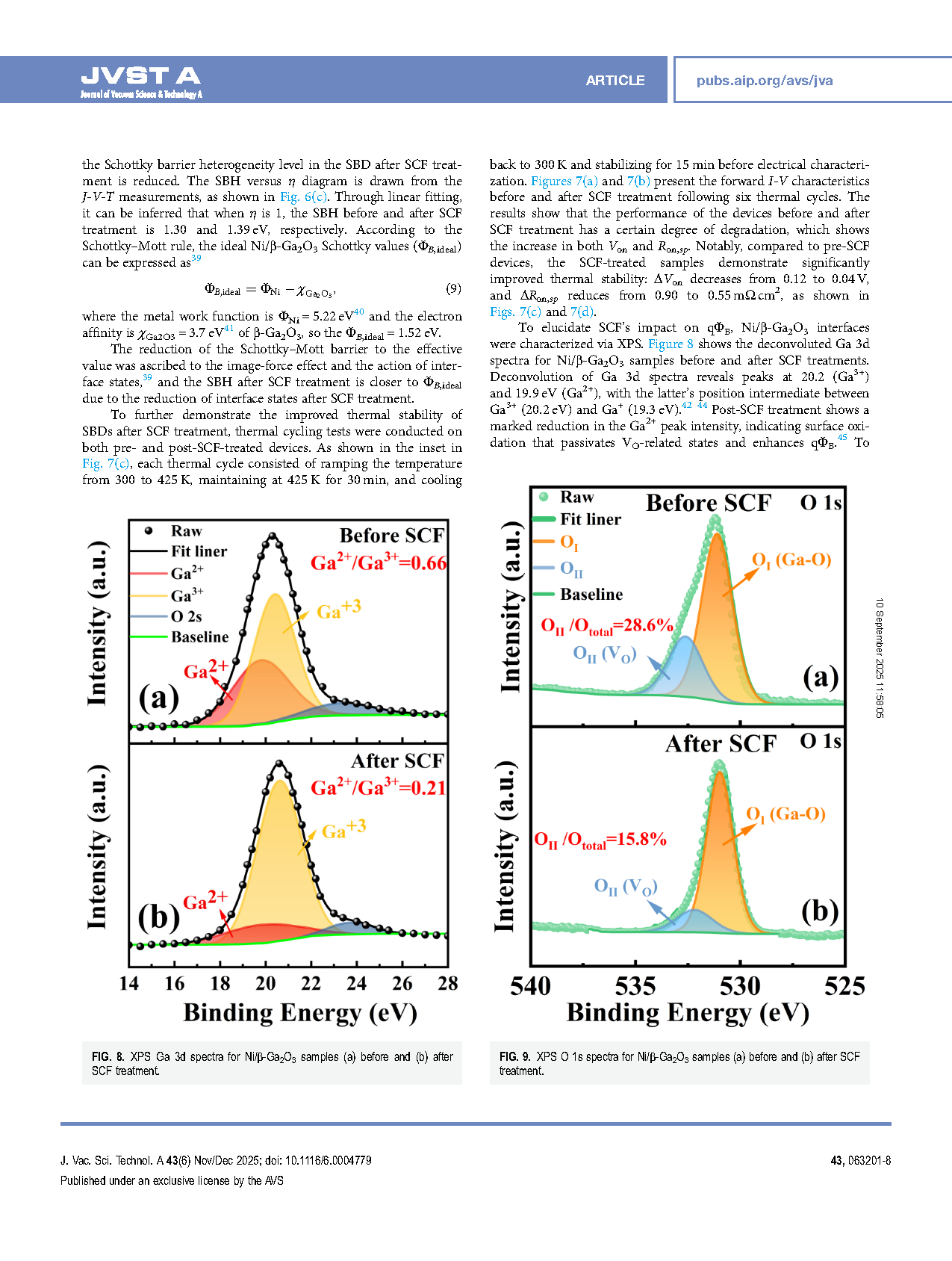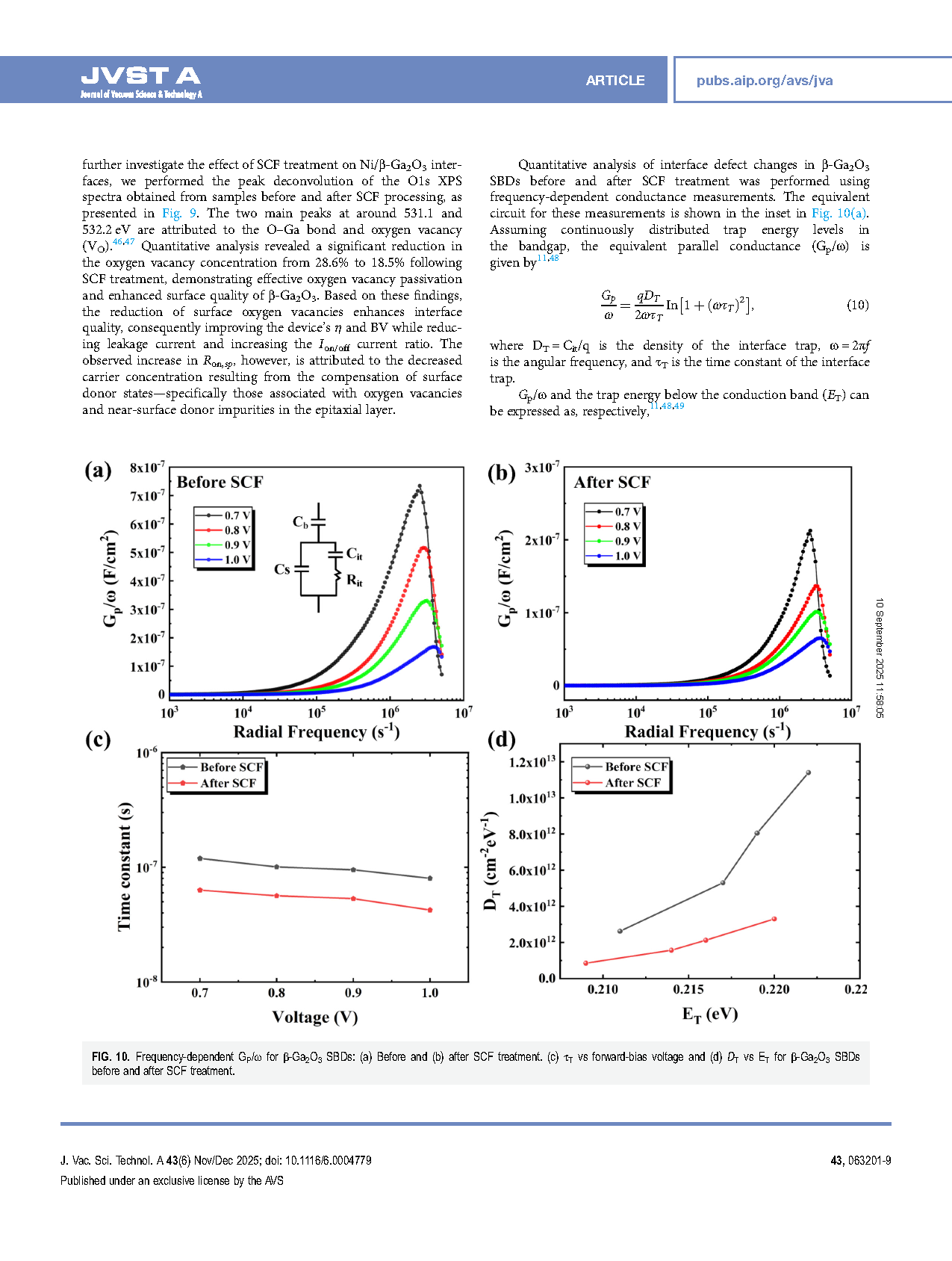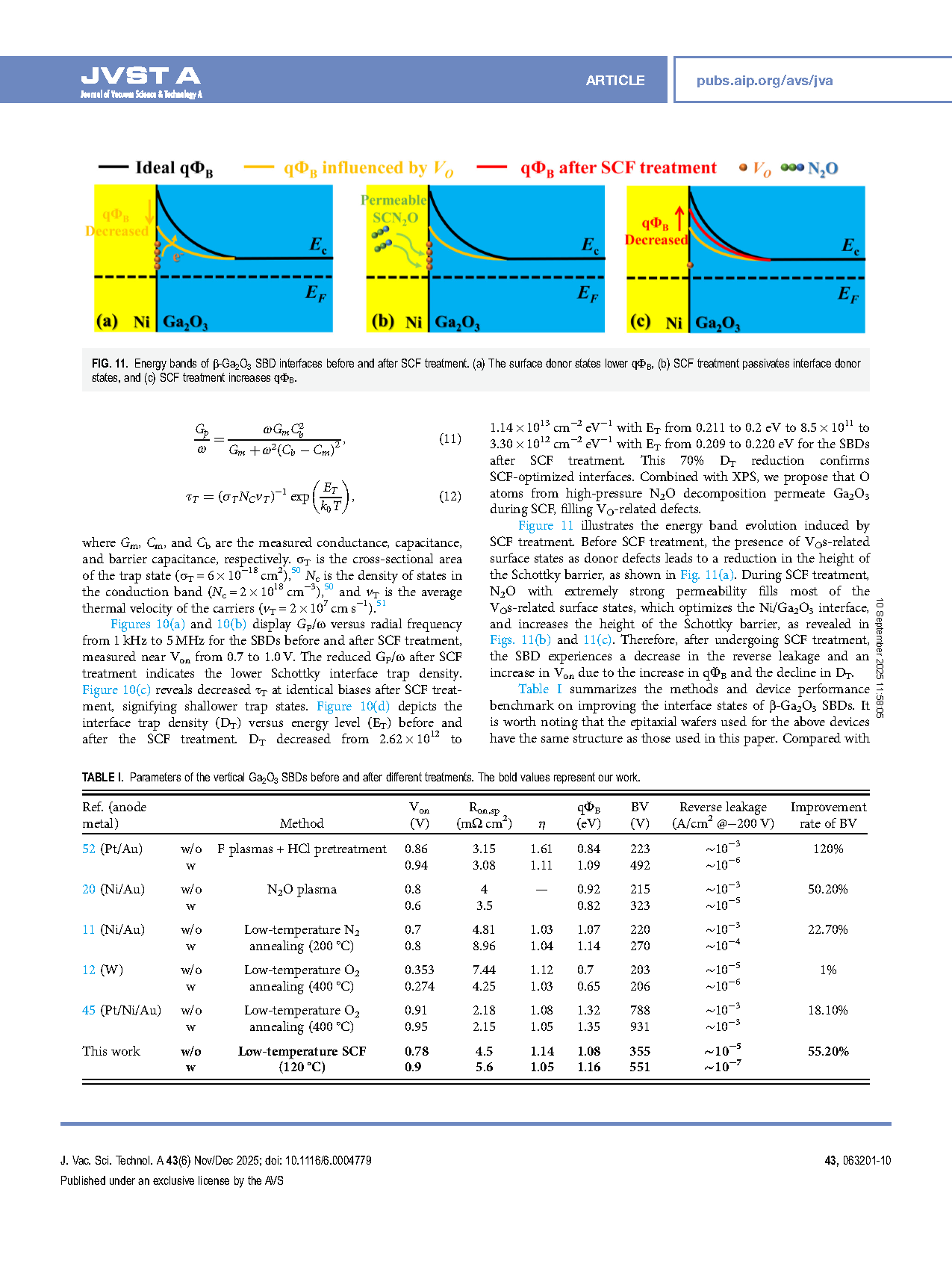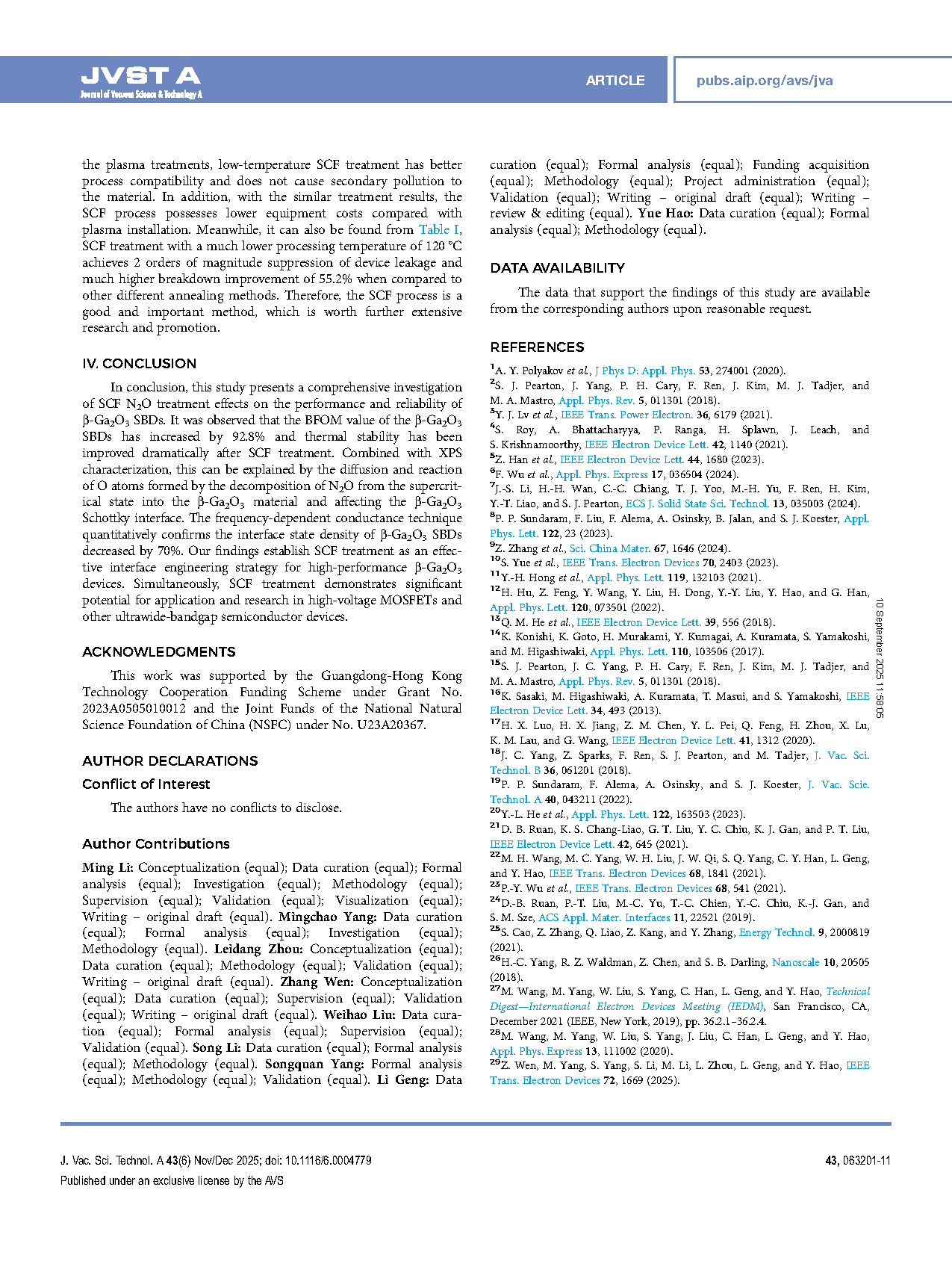

【Member Papers】Enhanced β-Ga₂O₃ Schottky diode interface characteristics via low-temperature supercritical fluid technology
日期:2025-09-25阅读:242
Researchers from the Xi’an Jiaotong University and Xidian University have published a dissertation titled "Enhanced β-Ga2O3 Schottky diode interface characteristics via low-temperature supercritical fluid technology" in Journal of Vacuum Science & Technology A.
Project Support
This work was supported by the Guangdong-Hong Kong Technology Cooperation Funding Scheme under Grant No. 2023A0505010012 and the Joint Funds of the National Natural Science Foundation of China (NSFC) under No. U23A20367.
Background
β-Ga₂O₃, with its ultrawide bandgap (4.5–4.9 eV), high critical field strength, and excellent thermal stability, has emerged as a leading candidate for next-generation high-power and high-temperature electronic devices. The advancement of large-area β-Ga₂O₃ substrate growth has significantly improved its commercial feasibility. However, achieving high-performance devices requires optimization of epitaxial quality and suppression of interface traps to mitigate leakage current, delay breakdown, and enhance reliability. In particular, the metal–semiconductor interface plays a decisive role in the performance of Schottky barrier diodes (SBDs), making interface engineering a research priority. Conventional interface treatments, such as plasma processing, low-temperature annealing, and capping layer design, can partially improve performance but often suffer from limited trap suppression or process-induced damage. Recently, supercritical fluid (SCF) technology has attracted attention for its unique combination of high diffusivity and solubility, enabling effective interface defect passivation at low temperatures (~120 °C) without thermal damage. Compared with atomic layer deposition or plasma treatments, SCF offers distinct advantages including low-temperature operation, nondamaging permeability, and chemical mildness, making it a promising strategy for interface optimization in β-Ga₂O₃ devices.
Abstract
This study presents a comprehensive investigation into the impact of supercritical fluid (SCF) N2O treatment on β-Ga2O3 Schottky barrier diodes (SBDs). Capacitance-voltage (C-V) analysis indicates a marginal reduction in the carrier concentration within the β-Ga2O3 drift layer post-SCF treatment. Remarkably, the treated SBDs exhibit substantial electrical enhancement: breakdown voltage surges from 355 to 551 V, reverse current density plunges by approximately two orders of magnitude, and Baliga’s figure of merit improves by 92.8%. Temperature-dependent forward current-voltage measurements further demonstrate superior high-temperature operational stability in SCF-processed devices. Crucially, frequency-dependent conductance measurements reveal a significant decrease in interface state density, from 2.62 × 1012–1.14 × 1013 cm−2 eV−1 to 8.5 × 1011–3.30 × 1012 cm−2 eV−1, alongside reduced trap activation energy (from 0.211–0.220 to 0.209–0.220 eV). These findings establish SCF treatment as a potent technique for interfacial engineering and performance optimization in β-Ga2O3 SBDs.
Conclusion
In conclusion, this study presents a comprehensive investigation of SCF N2O treatment effects on the performance and reliability of β-Ga2O3 SBDs. It was observed that the BFOM value of the β-Ga2O3 SBDs has increased by 92.8% and thermal stability has been improved dramatically after SCF treatment. Combined with XPS characterization, this can be explained by the diffusion and reaction of O atoms formed by the decomposition of N2O from the supercritical state into the β-Ga2O3 material and affecting the β-Ga2O3 Schottky interface. The frequency-dependent conductance technique quantitatively confirms the interface state density of β-Ga2O3 SBDs decreased by 70%. Our findings establish SCF treatment as an effective interface engineering strategy for high-performance β-Ga2O3 devices. Simultaneously, SCF treatment demonstrates significant potential for application and research in high-voltage MOSFETs and other ultrawide-bandgap semiconductor devices.
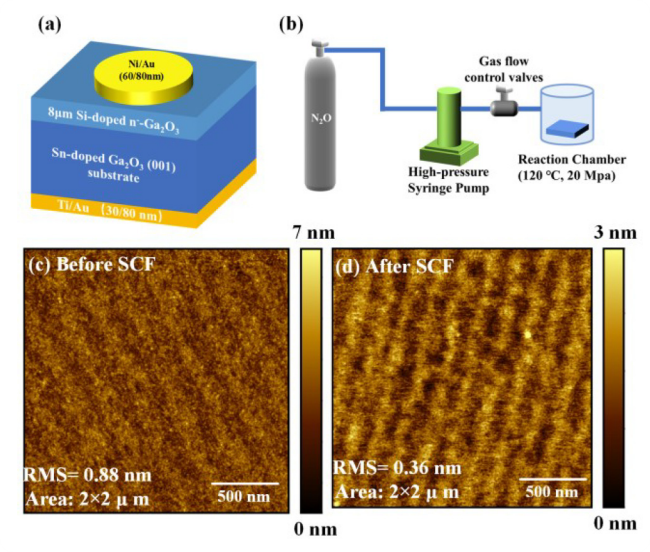
FIG. 1. (a) Device structure of the fabricated vertical β-Ga2O3 SBD; (b) configuration of the supercritical fluid (SCF) high-pressure system; (c) and (d) AFM surface topography of β-Ga2O3 with and without surface pretreatment by SCF treatment.

FIG. 2. C-V and 1/C2 -V characteristics of β-Ga2O3 SBDs (a) before and (b) after SCF treatment at 1 MHz.
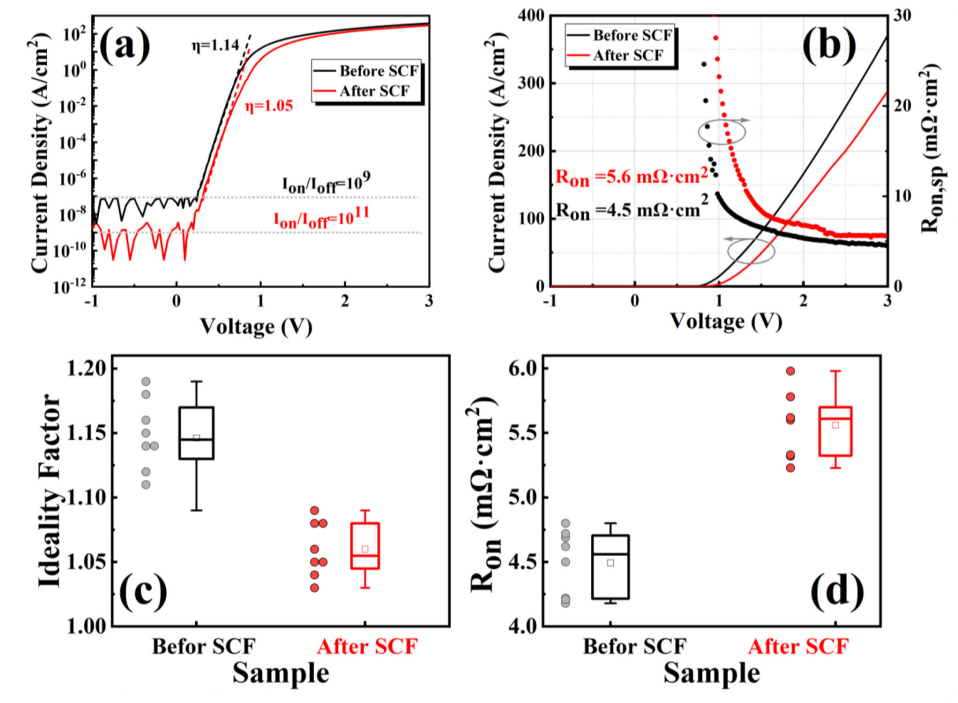
FIG. 3. (a) Semilogarithmic and (b) linear forward J-V characteristics and extracted Ron,sp as a function of forward bias of β-Ga2O3 SBDs before and after SCF treatment. Box plots of (c) η and (d) Ron,sp for eight device sets before and after SCF treatment.
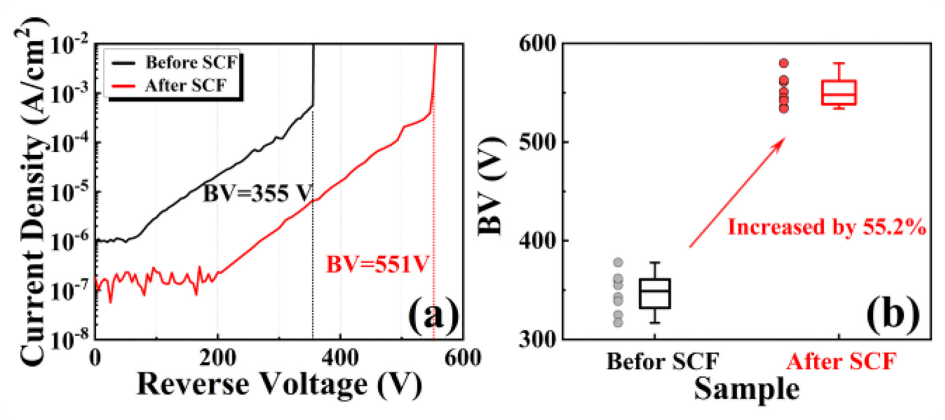
FIG. 4. (a) Reverse J-V characteristics of β-Ga2O3 SBDs before and after SCF treatment. (b) Box plots of BV for eight pairs of device sets before and after SCF Treatment.
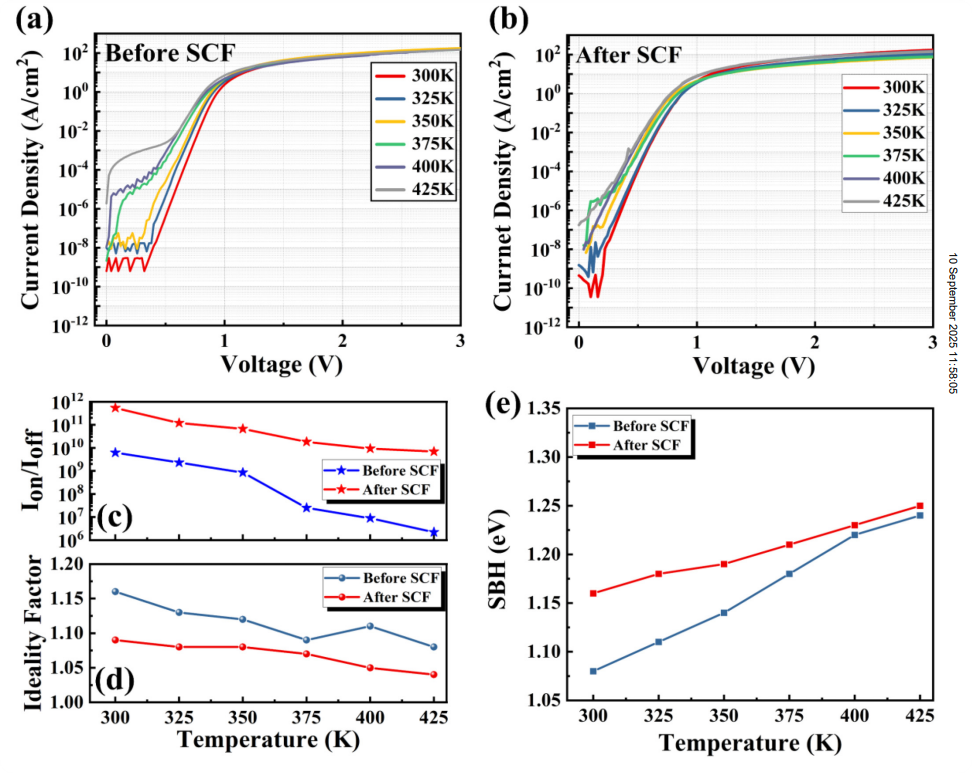
FIG. 5. Plots of forward J-V-T characteristics of β-Ga2O3 SBDs (a) before SCF treatment and (b) after SCF treatment. Temperature-dependent of (c) Ion/Ioff, (d) η, and (e) qΦB based on the measurement of temperatures from 300 to 425 K.
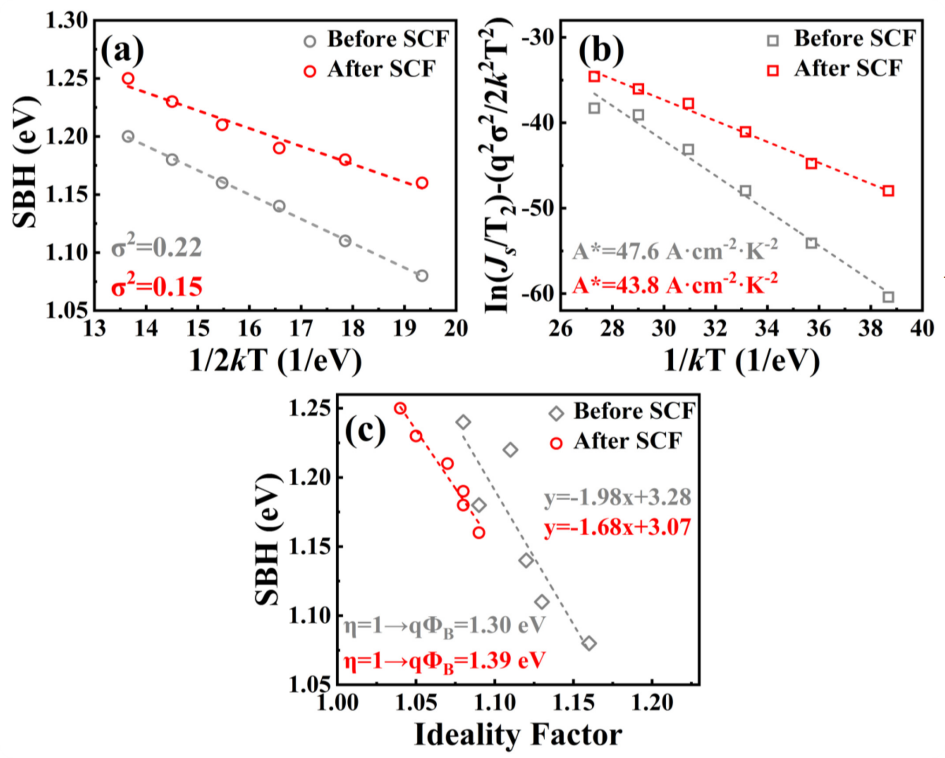
FIG. 6. Extracted (a) σ2 and (b) A* using the Richardson plot method considering the inhomogeneity effect, (c) SBH vs η plots obtained from J-V-T measurements for before and after SCF treatment.
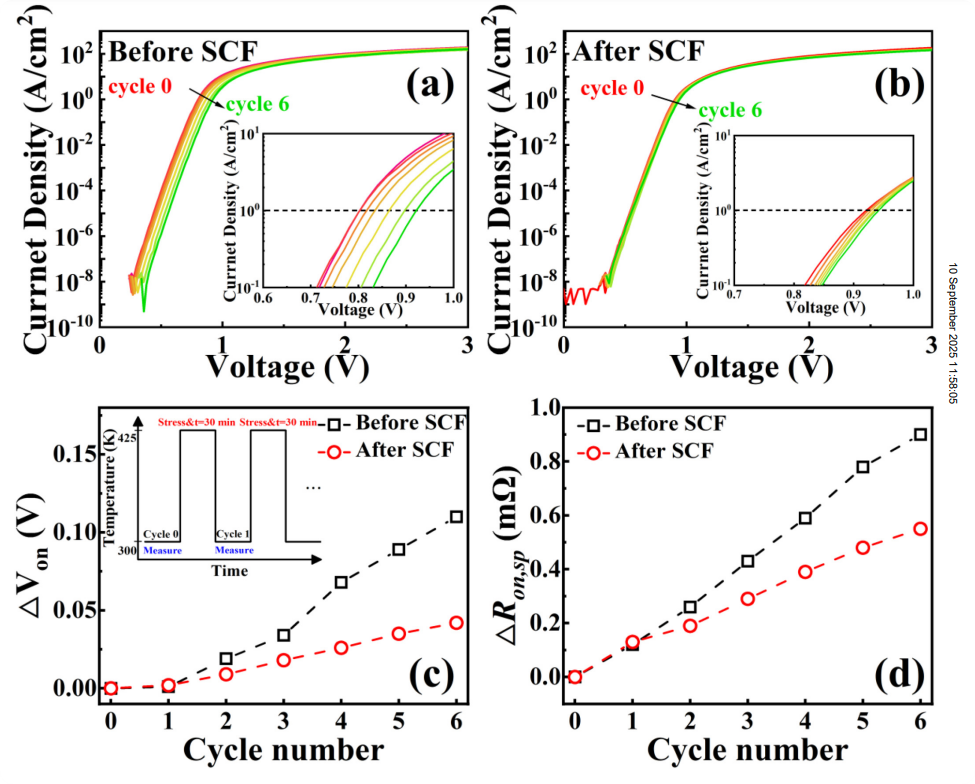
FIG. 7. Forward I-V characteristics (a) before and (b) after SCF treatment following six thermal cycles. (c) ΔVon and (d) ΔRon,sp of the devices before and after SCF treatment.
DOI:
doi.org/10.1116/6.0004779
